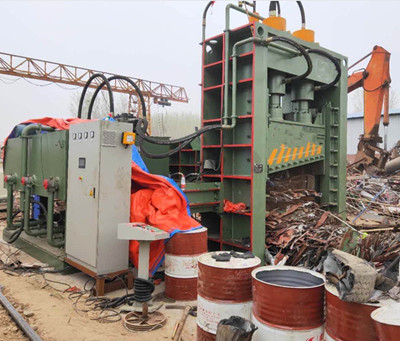Cutting through Tough Challenges: The Power of Heavy Hydraulic Shears
2023-10-17
Introduction
In the world of metalworking, construction, and demolition, there's often a need to cut through massive pieces of metal, concrete, or other sturdy materials. That's where heavy hydraulic shears come into play. These powerful machines are designed to handle the toughest cutting tasks with ease, making them indispensable tools in various industries. In this blog, we'll explore the world of heavy hydraulic shears, understanding their design, applications, and how they play a crucial role in modern industrial processes.
The Basics of Heavy Hydraulic Shears
Heavy hydraulic shears are industrial machines designed for precision cutting, often with immense force. They utilize hydraulic power to generate the necessary force for cutting through materials like steel, concrete, and scrap metal. These shears come in various sizes and configurations to accommodate different applications, from small-scale recycling operations to large-scale demolition projects.
Key Components of Heavy Hydraulic Shears
1. Hydraulic System: The heart of the heavy hydraulic shear is its hydraulic system, which provides the power needed to cut through tough materials. It consists of a hydraulic pump, hoses, and cylinders.
2. Blades: Heavy-duty blades made of high-strength steel or alloys are the cutting edge of these machines. They come in various shapes and sizes to suit specific cutting requirements.
3. Jaws: The jaws of the shear hold and stabilize the material being cut. They are typically designed to provide a secure grip and prevent movement during the cutting process.
4. Control Panel: Modern hydraulic shears often feature user-friendly control panels that allow operators to adjust settings for different materials and cutting tasks.
Applications of Heavy Hydraulic Shears
1. Scrap Recycling: Heavy hydraulic shears are widely used in scrap yards and recycling facilities to process large pieces of metal into smaller, manageable sizes for recycling.
2. Demolition: These shears are instrumental in demolishing buildings, bridges, and other structures by cutting through steel, concrete, and other construction materials.
3. Metal Processing: Heavy hydraulic shears play a vital role in metal fabrication, where they are used to cut and shape steel plates, beams, and other structural components.
4. Shipbreaking: In the shipbreaking industry, these shears are employed to dismantle old ships by cutting through their hulls and steel superstructures.
5. Construction: Heavy hydraulic shears are used in construction for cutting and preparing reinforcement bars, steel beams, and other materials.
6. Mining: In mining operations, these shears are utilized for cutting and breaking down rock, ore, and other geological materials.
Advantages of Heavy Hydraulic Shears
1. Powerful Cutting: These shears can generate immense cutting force, allowing them to cut through thick and tough materials efficiently.
2. Precision: They offer precise control, enabling operators to make accurate cuts with minimal waste.
3. Safety: Modern hydraulic shears often incorporate safety features and controls to protect operators and ensure safe operation.
4. Versatility: Heavy hydraulic shears can handle a wide range of materials, making them versatile tools in various industries.
5. Efficiency: They contribute to increased efficiency and productivity by reducing manual cutting efforts and processing time.
Conclusion
Heavy hydraulic shears are the unsung heroes of many industries, providing the muscle needed to cut through the toughest materials with precision and efficiency. From recycling facilities to demolition sites and construction projects, these powerful machines are essential for achieving the desired results while ensuring safety and productivity. As technology continues to advance, heavy hydraulic shears will likely become even more capable and versatile, further solidifying their role in modern industrial processes.



